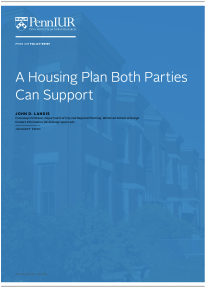Key Message
The housing plan advocates for a comprehensive and balanced approach to addressing America's housing challenges. Firstly, it emphasizes expanding minority homeownership by reinstating and enhancing the roles of Fannie Mae and Freddie Mac in promoting mortgage accessibility for minority and underserved communities. Then it calls for federal support to incentivize smart and equitable infill housing construction, particularly in cities with good public transportation access, to balance market-rate and affordable housing needs.
The plan also recommends integrating homeless reduction and economic mobility goals into existing low-income renter assistance programs like the Housing Choice Voucher (HCV) and Low-Income Housing Tax Credit (LIHTC) programs. By directing these programs to neighborhoods with better educational and workforce development opportunities, the plan aims to promote upward economic mobility. It proposes the creation of Equity Mobility Plans (EMPs) to better connect neighborhoods through diverse and affordable transportation options, enhancing urban livability. Moreover, it suggests offering low-interest loans for residential energy conservation and climate change mitigation, encouraging the retrofitting of older homes to meet modern energy efficiency standards. These initiatives are designed to be affordable, build on existing effective programs, and create new housing and mobility opportunities, thereby gaining bipartisan support.


